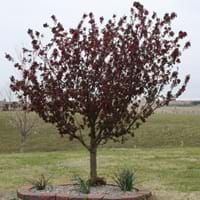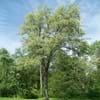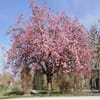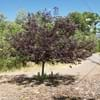Life Span
Perennial
Perennial
Origin
Western Asia
Eastern Europe, Southern Europe, Western Asia
Types
Büttnera Czerwona, Hedelfinger Sweet Cherry
Not Available
Number of Varieties
Not Available
Habitat
Woodland Garden Canopy
open Woodlands, Roadsides, Waste areas
USDA Hardiness Zone
5-8
4-9
Sunset Zone
2a, 2b, 6, 7, 14, 15
3a, 3b, 4, 5, 6, 7, 8, 9, 10, 11, 12, 13, 14, 15, 16, 17, 18, 19, 20, 21, 22
Habit
Upright/Erect
Oval or Rounded
Flower Color
Not Available
Not Available
Flower Color Modifier
Bicolor
Bicolor
Fruit Color
Not Available
Not Available
Leaf Color in Spring
Not Available
Not Available
Leaf Color in Summer
Not Available
Not Available
Leaf Color in Fall
Not Available
Not Available
Leaf Color in Winter
Not Available
Not Available
Leaf Shape
broad, flat
Arrowhead
Plant Season
Spring, Summer, Fall
Spring, Summer, Fall
Sunlight
Full Sun, Partial Sun
Full Sun
Type of Soil
Clay, Loam, Sand
Loam
The pH of Soil
Acidic, Neutral
Acidic, Neutral
Soil Drainage
Well drained
Well drained
Bloom Time
Spring
Early Spring
Tolerances
Not Available
Drought
Where to Plant?
Ground
Ground
How to Plant?
Semi-hardwood and hardwood cuttings
Grafting, Seedlings
Plant Maintenance
Medium
Medium
Watering Requirements
Water 1 in. per week during the active growing period, Water more in summer
Requires a lot of watering, Requires regular watering, Requires watering in the growing season
In Summer
Lots of watering
Lots of watering
In Spring
Moderate
Moderate
In Winter
Average Water
Average Water
Soil pH
Acidic, Neutral
Acidic, Neutral
Soil Type
Clay, Loam, Sand
Loam
Soil Drainage Capacity
Well drained
Well drained
Sun Exposure
Full Sun, Partial Sun
Full Sun
Pruning
Remove dead branches, Remove thin branches
Remove damaged leaves, Remove dead branches, Remove dead leaves, Remove hanging branches
Fertilizers
A 10 pound bag of 16-4-8 fertilizer
Compost, fertilize in spring, Nitrogen
Pests and Diseases
Aphids, Borers, Mites
Aphids, Borers, Mealybugs, Scale
Plant Tolerance
Drought
Drought
Flower Petal Number
Not Available
Not Available
Foliage Texture
Not Available
Not Available
Foliage Sheen
Not Available
Not Available
Attracts
Birds, Flies
Not Available
Allergy
Mild Allergen, Vomiting
Throat itching
Aesthetic Uses
Beautification, Used in parkland
Showy Purposes
Beauty Benefits
Anti-ageing, Good Cleanser, Good for skin, Promotes Healthy Hair
Good for skin, Good for skin and hair, Improve hair condition, Improve skin condition
Environmental Uses
Air purification
Air purification, Food for animals, Food for birds, Food for insects, Prevent Soil Erosion, Shadow Tree
Medicinal Uses
Antitussive, Astringent, Diuretic, Tonic
Digestion problems, High blood pressure, Improve heart health, Inflammation, Lung Problems, Nutrients, Oral health
Part of Plant Used
Fruits, Seeds
Fruits, Seeds
Other Uses
Used for making green dye, Wood is used for making furniture
Employed in herbal medicine, Used As Food, Used for its medicinal properties
Used As Indoor Plant
No
Yes
Used As Outdoor Plant
Yes
Yes
Garden Design
Edible, Fruit / Fruit Tree, Shade Trees, Topiary / Bonsai / Espalier
Feature Plant, Foundation, Fruit / Fruit Tree
Botanical Name
PRUNUS avium
PRUNUS cerasifera
Common Name
Sweet Cherry
Cherry Plum, Myrobalan Plum
In Hindi
मीठी चेरी
चेरी प्लम
In German
Süße Kirsche
cherry Plum
In French
Cerise sucrée
Prunus
In Spanish
Cereza dulce
cherry Plum
In Greek
γλυκό κεράσι
Cherry Plum
In Portuguese
Cereja doce
cherry Plum
In Polish
Słodka Wiśnia
Cherry Plum
In Latin
dulcis cerasus
cerasus PRUNUM
Phylum
Magnoliophyta
Tracheophyta
Class
Magnoliopsida
Magnoliopsida
Clade
Angiosperms, Eudicots, Rosids
Angiosperms, Eudicots, Rosids
Tribe
Amygdaleae
Amygdaleae
Subfamily
Amygdaloideae
Amygdaloideae
Number of Species
Not Available
Not Available
Season and Care of Sweet Cherry and Cherry Plum
Season and care of Sweet Cherry and Cherry Plum is important to know. While considering everything about Sweet Cherry and Cherry Plum Care, growing season is an essential factor. Sweet Cherry season is Spring, Summer and Fall and Cherry Plum season is Spring, Summer and Fall. The type of soil for Sweet Cherry is Clay, Loam, Sand and for Cherry Plum is Loam while the PH of soil for Sweet Cherry is Acidic, Neutral and for Cherry Plum is Acidic, Neutral.
Sweet Cherry and Cherry Plum Physical Information
Sweet Cherry and Cherry Plum physical information is very important for comparison. Sweet Cherry height is 910.00 cm and width 760.00 cm whereas Cherry Plum height is 2,540.00 cm and width 2,540.00 cm. The color specification of Sweet Cherry and Cherry Plum are as follows:
Sweet Cherry flower color: Not Available
Sweet Cherry leaf color: Not Available
Cherry Plum flower color: Not Available
- Cherry Plum leaf color: Not Available
Care of Sweet Cherry and Cherry Plum
Care of Sweet Cherry and Cherry Plum include pruning, fertilizers, watering etc. Sweet Cherry pruning is done Remove dead branches and Remove thin branches and Cherry Plum pruning is done Remove damaged leaves, Remove dead branches, Remove dead leaves and Remove hanging branches. In summer Sweet Cherry needs Lots of watering and in winter, it needs Average Water. Whereas, in summer Cherry Plum needs Lots of watering and in winter, it needs Average Water.





